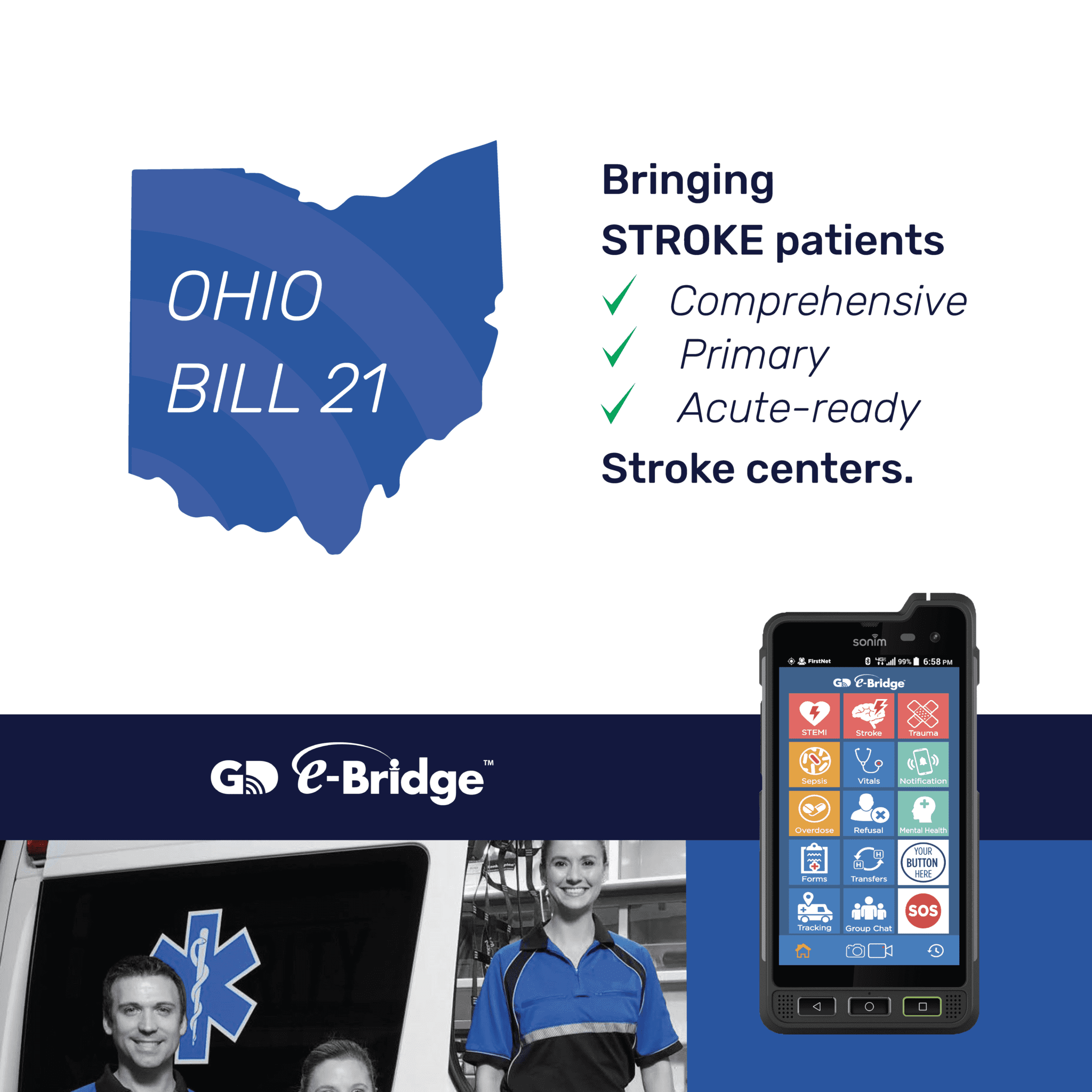How Ohio EMS Can Comply with Ohio Senate Bill 21, a New Stroke Protocol and Transport Bill using Telehealth
As an industry-standard best practice, a patient undergoing a stroke should be treated in less than 60 minutes. Time is of the essence, yet stroke patients are often transported to the closest hospital rather than the hospital that would provide the most appropriate care. EMS and fire first responders need protocols for evaluating and transporting stroke patients to the most appropriate facility to ensure they get the timely care they need.
Recently, Ohio Gov. Mike DeWine signed Ohio Senate Bill 21 into law. The Ohio Senate Bill 21 requires the state Board of Emergency Medical, Fire, and Transportation Services to, “adopt guidelines for the assessment, triage, and transport of stroke patients to hospitals” as well as requiring EMS organizations to “establish stroke protocols and provide training based on the board’s guidelines.”
Responsive innovations from GD are all about enabling the right care, at the right place and at the right time.
GD’s e-Bridge mobile telemedicine app allows for fast HIPAA-secure sharing of data, pictures, audio, video, and live streaming. This can be a valuable tool to help compliance with Ohio Senate Bill 21 and reduce time to treatment.
The e-Bridge Stroke Module offers capabilities to configure a regions preferred stroke scale into a template for EMS, along with metrics, timestamps, and real-time ETA for activating teams at the hospital and streamlining workflow processes.
Hospital teams are able to observe live or recorded stroke assessments withe-Bridge’s video telehealth capability. This capability will help EMS easily identify where they fall in Ohio’s three-tiered hospital system —comprehensive, primary, and acute-ready stroke centers. Each patient is sent to the stroke center that best fits the care they needthrough this data-sharing team approach. This helps the hospital to prepare in advance for their arrival, which shaves precious minutes off time to treatment.
GD’s D-Scribe X automatically records and organizes all data for e-Bridge, including case data documentation, audio, and video. This facilitates quality review and reporting to ensure and fire agencies are implementing protocols in accordance with the new regulations and benchmarks.
Ohio Senate Bill 21 goes a long way in helping Ohio EMS and fire first responders provide stroke patients with the fastest, most appropriate care. To learn more about how GD’s telehealth solutions can support this effort, please contact us.
About GD (General Devices)
GD is a NJ-based med-tech company specializing in mobile telemedicine and telehealth solutions. GD’s solutions help EMS and fire first responders, hospitals, and communities and regions deliver smarter, expedient patient care.
GD’s user-friendly solutions are powered by innovation. They facilitate secure, mobile communications and rapid data sharing across acute and non-acute care teams to help save time, money, and lives. Backed by a 40+ year history and thousands of implementations, GD is a widely revered industry leader — click here to learn more.


